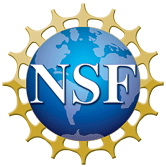Seafloor images from the Long Island Sound Phase IIB area (2022)
This data set contains the images derived from frame captures of video collected by the Ponar Imaging and Sampling System for Assessing Habitat (PISSAH) developed by the Long Island Sound Mapping and Research Collaborative (LISMaRC) to obtain both physical sediment grab samples and ultra-high definition (4K) video using the latest version of GoPro cameras. A three-day survey using the PISSAH deployed from the research vessel Weicker was conducted from October 19-21, 2022 to obtain seafloor imagery and grab samples in the Phase II area. The PISSAH was used to acquire both physical sediment grab samples as well as GoPro video from 18 sites in the Phase I and II areas of the Long Island Sound Cable Fund (LISCF) Seafloor Habitat Mapping Initiative that served as a modern-day assessment of the seafloor communities at these sites. The videos obtained were viewed and representative images (frames) were captured and analyzed for the presence and percent cover of key taxa identified for the Assessing Ecological Change and Resiliency (AECR) project to compare with historical data/imagery from these sites to assess change or stability in these areas of Long Island Sound. Image file names included original GoPro video file names and frame time code (i.e., hours, minutes, and seconds since the start of recording). Frames of the seafloor were captured when the seafloor was visible and clear; care was taken to ensure frames provided representative images of the seafloor throughout the transect. At some sites, poor visibility inevitably reduced the number of usable frames available for analysis. Individual video frames were captured as image files (.TIFF) and most of the images were color-corrected using the IrfanView software, indicated by the file name ending in a .irfvnwcolor suffix. A total of 532 frames were captured, saved and exported as .jpeg files for archival purposes using the MacOS Preview program retaining the same image size (25.1 MB), dimensions (38840 x 2160), resolution (72 x 72) and color space (RGB). Of these images, 235 were deemed adequate (i.e. visibility, presence of parallel lasers) for analysis using the ImageJ software for presence/absence, point count and percent cover of observed taxa. Results were presented in Excel spreadsheets for cell counts and percent cover and presence/absence for each of 18 sites. Spatial data in the form of ESRI shapefiles were also developed showing the location of each image, along with the presence/absence data. These spreadsheets and shapefiles are linked to this data set. Funding was provided by the Long Island Sound Cable Fund Seafloor Habitat Mapping Initiative administered cooperatively by the EPA Long Island Sound Study and the Connecticut Department of Energy and Environmental Protection (DEEP).
Conroy, Chris
Investigator
University of New Haven
Matassa, Catherine
Investigator
UConn
Gerhardt, Catherine
Investigator
University of New Haven
Zajac, Roman
Investigator
University of New Haven
Quality
2
The data have been processed/modified to a level beyond that of basic quality control (e.g. final processed sonar data, photo-mosaics).
Data Files
Documents
Data Citation Information
ISO/XML Metadata
Expand


